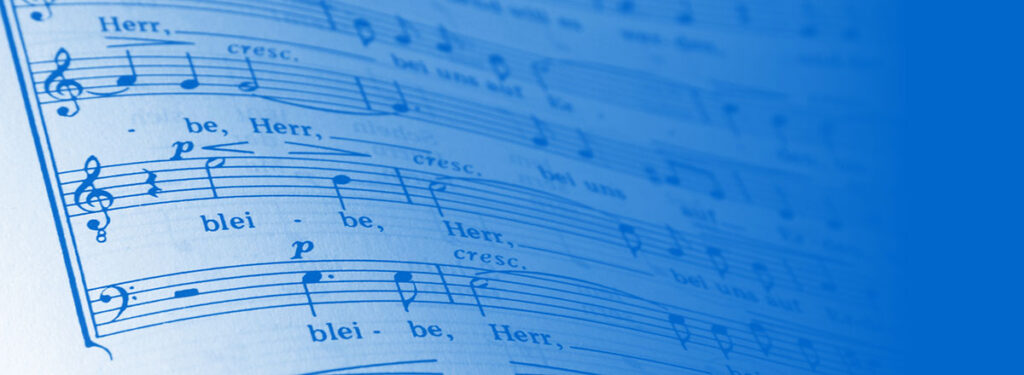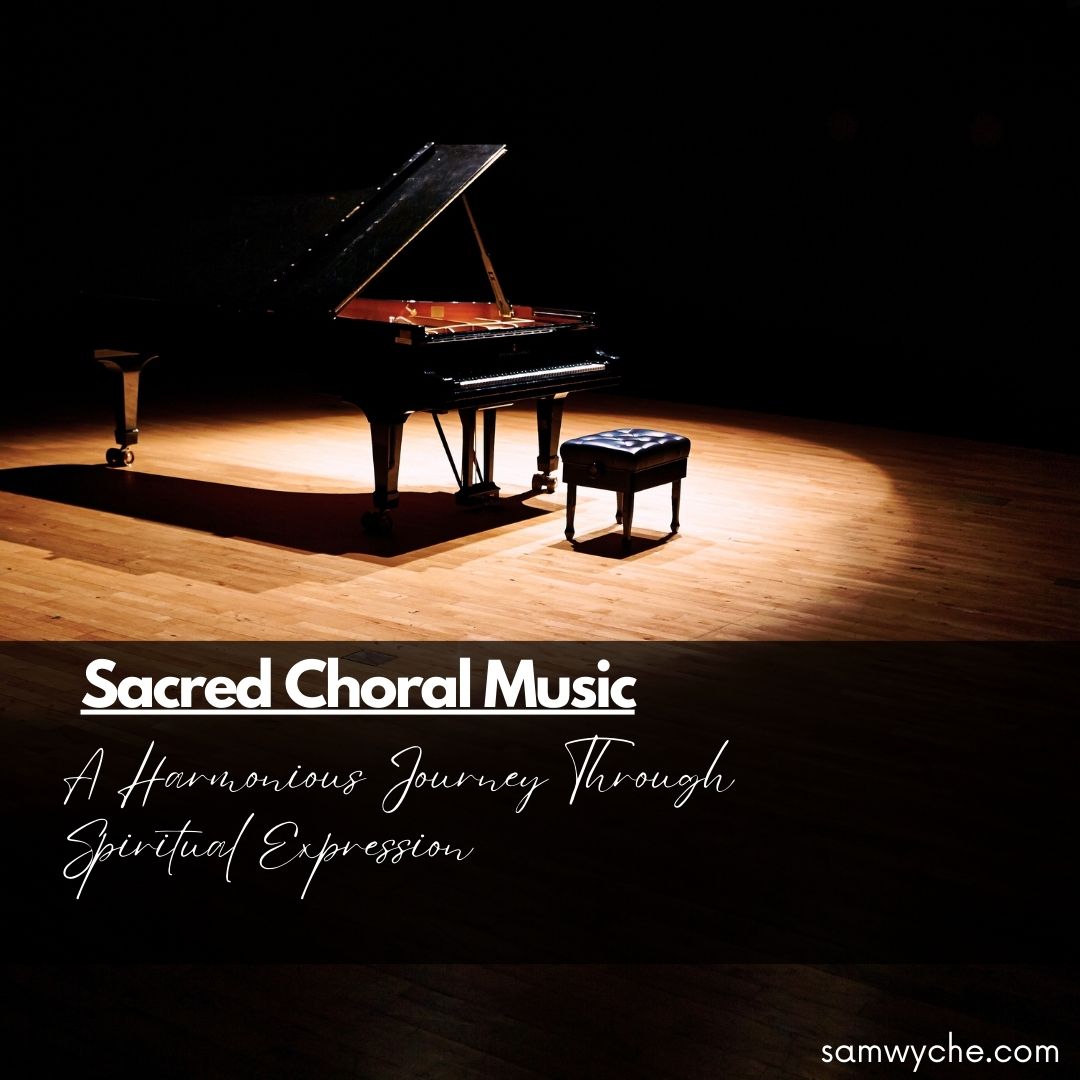Sacred choral music stands as a testament to the harmonious intertwining of music and spirituality. From ancient chants to grand symphonies, it has played a pivotal role in religious ceremonies, uplifting congregations, and creating a profound sense of devotion. In this article, we will explore the rich history, significance, elements, notable compositions, cultural influences, societal impact, and future prospects of sacred choral music.
The Historical Significance of Sacred Choral Music
Early Origins
The roots of sacred choral music can be traced back to ancient civilizations, where religious rituals were often accompanied by communal singing. Whether it was the hymns of ancient Mesopotamia or the chants of Egyptian temples, music became an integral part of religious worship, fostering a deep connection between the divine and the human.
Medieval Era
During the medieval period, Gregorian chant emerged as a dominant form of sacred choral music in the Western Christian Church. These monophonic melodies, sung in Latin, were characterized by their serene and contemplative nature. Gregorian chant played a crucial role in liturgical celebrations, evoking a sense of reverence and devotion.
Renaissance Period
The Renaissance witnessed a flourishing of sacred choral music, with polyphonic compositions taking center stage. Prominent composers such as Giovanni Pierluigi da Palestrina and Thomas Tallis crafted intricate vocal harmonies, bringing a new dimension to religious music. The interplay of voices and the exploration of rich harmonies elevated the spiritual experience for both the performers and the listeners.
Baroque Era
The Baroque era marked a period of grandeur and opulence in sacred choral music. Composers like Johann Sebastian Bach and George Frideric Handel created monumental works, such as Bach’s Mass in B Minor and Handel’s Messiah. These compositions showcased the fusion of intricate melodies, powerful choruses, and orchestral accompaniments, leaving an indelible mark on the history of sacred choral music.

The Role of Sacred Choral Music in Worship
Enhancing Liturgical Celebrations
Sacred choral music enhances the beauty and solemnity of liturgical celebrations across various religious traditions. Whether it is the Catholic Mass, Anglican Evensong, or Eastern Orthodox Divine Liturgy, choral pieces enrich the worship experience, providing a transcendent backdrop to prayers, rituals, and sermons.
Creating an Atmosphere of Devotion
Choral music has the remarkable ability to create an atmosphere of devotion, inviting worshippers to engage with their spirituality on a profound level. The soaring melodies, harmonies, and carefully crafted lyrics evoke a range of emotions, fostering a sense of awe, reverence, and inner reflection.
The Elements of Sacred Choral Music
Melody and Harmony
At the heart of sacred choral music lie the intertwining melodies and harmonies that give life to the compositions. These elements, carefully crafted by composers, evoke various emotions and convey the spiritual message of the text. From serene and contemplative passages to triumphant and jubilant sections, the melodies and harmonies create a captivating sonic landscape.
Text and Lyrics
The choice of text and lyrics in sacred choral music is of utmost importance. Whether drawn from religious scriptures, ancient liturgical texts, or contemporary poetry, the words carry profound meaning and convey the spiritual essence of the composition. The interplay between the text and the music creates a symbiotic relationship, enriching the overall impact of the piece.
Choral Techniques and Voices
Choral techniques, such as vocal blending, dynamic control, and precise articulation, are essential in achieving a cohesive and expressive performance. Different voice parts, including sopranos, altos, tenors, and basses, contribute their unique timbres, creating a rich tapestry of sound that resonates with audiences.
Notable Composers and Masterpieces
Johann Sebastian Bach and the Mass in B Minor
Johann Sebastian Bach’s Mass in B Minor is considered one of the greatest achievements in sacred choral music. With its intricate counterpoint, majestic choruses, and profound spirituality, the composition showcases Bach’s genius and continues to captivate audiences worldwide.
Wolfgang Amadeus Mozart and the Requiem
Mozart’s Requiem stands as a testament to the composer’s mastery of sacred choral music. The piece exudes both grandeur and intimacy, weaving together moments of sorrow, hope, and transcendence. Mozart’s untimely death left the Requiem unfinished, adding an air of mystery and intrigue to its legacy.
Ludwig van Beethoven and the Missa Solemnis
Beethoven’s Missa Solemnis is a monumental work that pushes the boundaries of sacred choral music. With its grand symphonic gestures, complex choral writing, and profound spirituality, the composition reflects Beethoven’s visionary approach and his desire to explore new artistic realms.
Regional Variations and Cultural Influences
Gregorian Chant in Catholicism
Gregorian chant holds a significant place in Catholic sacred music. Its monophonic melodies, sung in Latin, create a contemplative and meditative atmosphere during Mass and other liturgical services. The timeless beauty of Gregorian chant continues to inspire composers and musicians in contemporary settings.
Anglican Choral Tradition
The Anglican choral tradition is renowned for its rich history and vibrant musical heritage. From the sublime polyphony of the English Renaissance to the modern compositions of contemporary British composers, such as John Rutter and Bob Chilcott, Anglican choral music embraces diversity while upholding a sense of reverence and tradition.
Eastern Orthodox Chant
Eastern Orthodox chant encompasses a variety of styles, including Byzantine chant, Russian chant, and Serbian chant. These ancient musical traditions, rooted in the liturgical practices of the Eastern Orthodox Church, emphasize the use of vocal ornamentation, modal scales, and a deep sense of spirituality. Eastern Orthodox chant transports listeners into a realm of transcendent worship.
The Impact of Sacred Choral Music on Society
Emotional and Spiritual Upliftment
Sacred choral music has the power to touch the depths of human emotion and provide solace, inspiration, and hope. It has the ability to uplift the spirits of both performers and listeners, fostering a sense of communal bonding and shared transcendence.
Preservation of Tradition and Cultural Heritage
Sacred choral music serves as a custodian of tradition and cultural heritage. Through the performance and preservation of centuries-old compositions, we connect with the past, honoring the artistic achievements of our predecessors and keeping alive the customs and rituals associated with religious music.
Promoting Unity and Communal Bonding
Choral singing, especially in a sacred context, fosters a sense of unity and communal bonding. As voices blend together in harmony, individual differences fade away, and a collective identity emerges. Congregations and choirs alike become part of a musical journey that unites diverse individuals in a shared spiritual experience.
Contemporary Trends and Innovations
Fusion of Traditional and Modern Styles
In recent years, sacred choral music has witnessed a fusion of traditional and modern styles. Composers and arrangers have embraced contemporary harmonies, instrumentation, and genres, infusing fresh vitality into sacred music while preserving its inherent spirituality.
Incorporation of World Music Elements
The globalization of music has led to the incorporation of world music elements into sacred choral compositions. From African rhythms to Indian ragas, diverse musical traditions find their place within sacred contexts, creating a vibrant tapestry of cultural exchange and universal spirituality.
Collaborative Projects and Global Outreach
The advent of technology and online platforms has facilitated collaborative projects and global outreach in sacred choral music. Virtual choirs, international performances, and digital collaborations have expanded the reach and accessibility of this art form, connecting artists and audiences from different corners of the world.
The Future of Sacred Choral Music
Adaptation to Changing Times
Sacred choral music has continually adapted to changing times, and its future lies in embracing innovation while staying true to its core principles. Incorporating new technologies, exploring diverse musical styles, and engaging with a wider audience are crucial for its continued relevance and growth.
Revitalization and Relevance
To ensure the vitality of sacred choral music, it is essential to encourage young musicians, composers, and conductors to explore and contribute to this genre. Educational initiatives, workshops, and mentorship programs play a pivotal role in revitalizing and sustaining interest in sacred choral music.
Sustaining Interest and Participation
Creating opportunities for active participation in sacred choral music is key to its future. Involving congregations, community choirs, and schools in performances, workshops, and festivals fosters a sense of ownership and appreciation for this art form, ensuring its enduring legacy.
Conclusion
Sacred choral music remains an awe-inspiring testament to the fusion of music and spirituality. Its historical significance, role in worship, elements, notable compositions, cultural influences, societal impact, and future prospects paint a vivid picture of its enduring power. As we journey through the melodious landscapes of sacred choral music, let us celebrate its beauty, embrace its transformative potential, and continue to pass on this rich tradition to future generations.
FAQs
1. What is the significance of sacred choral music in religious ceremonies? Sacred choral music enhances the spiritual experience in religious ceremonies, providing a sublime and transcendent atmosphere. It helps to create a sense of devotion, uplifts the congregation, and deepens the connection between worshipers and the divine.
2. Who are some notable composers of sacred choral music? Notable composers of sacred choral music include Johann Sebastian Bach, Wolfgang Amadeus Mozart, Ludwig van Beethoven, and many others. Their compositions continue to inspire and move audiences with their profound spirituality and artistic brilliance.
3. How does sacred choral music preserve cultural heritage? Sacred choral music serves as a custodian of cultural heritage by preserving ancient musical traditions, religious rituals, and linguistic elements. Through the performance of centuries-old compositions, it keeps alive the customs and practices associated with religious music.
4. How does sacred choral music promote unity and communal bonding? Choral singing, especially in a sacred context, brings individuals together in a shared musical journey. As voices blend in harmony, differences dissolve, and a sense of unity and communal bonding emerges, fostering a profound connection among performers and listeners.
5. How can we ensure the future of sacred choral music? The future of sacred choral music depends on embracing innovation while staying true to its core principles. Encouraging young musicians, exploring new technologies, and involving a wider audience through educational initiatives and active participation are key to its continued relevance and growth.
